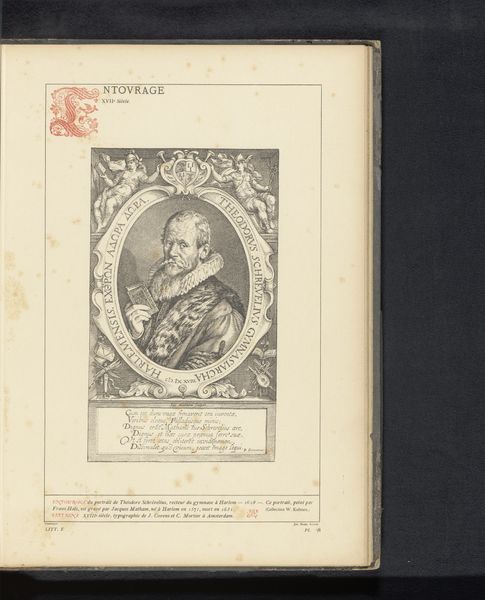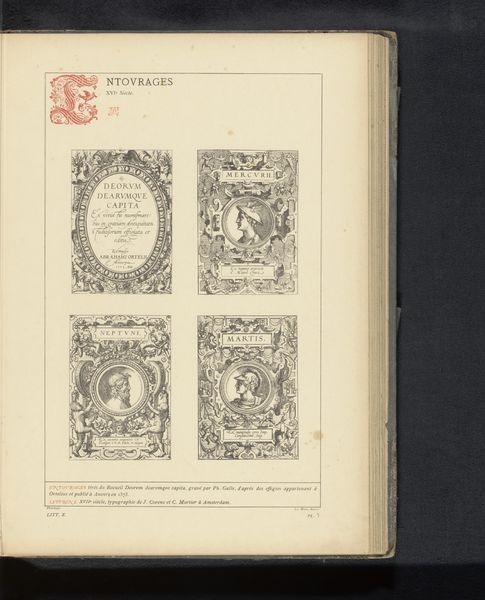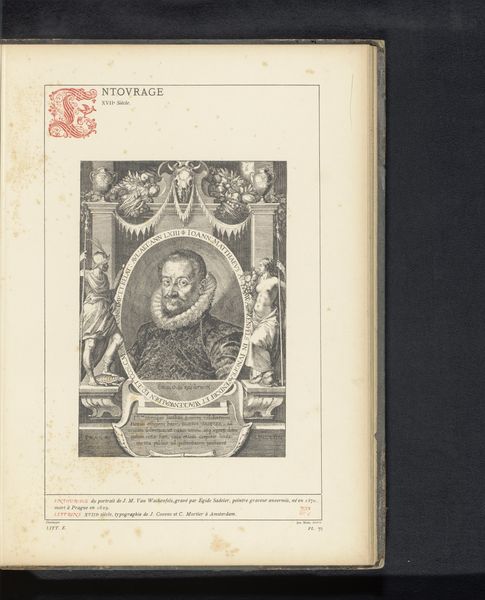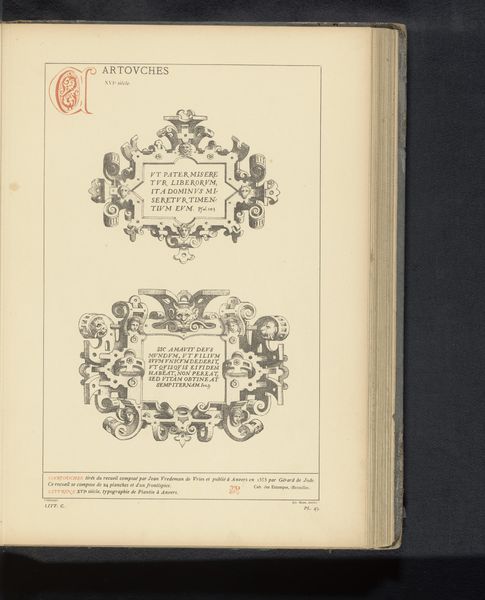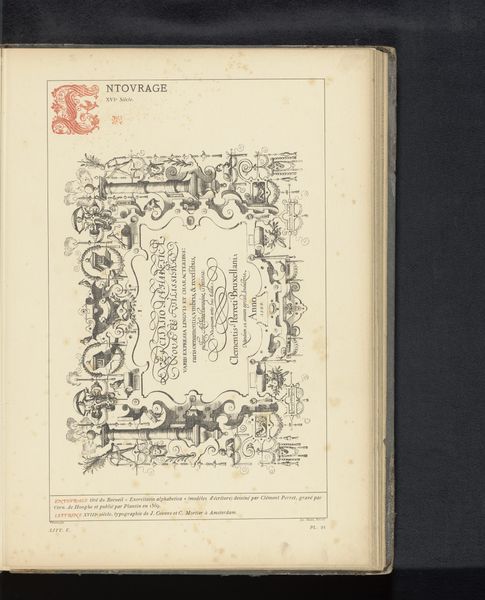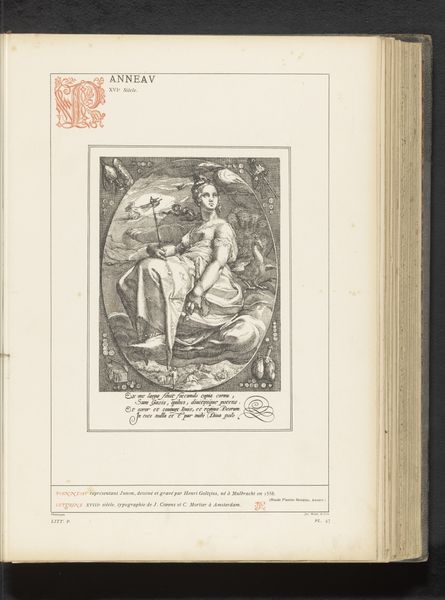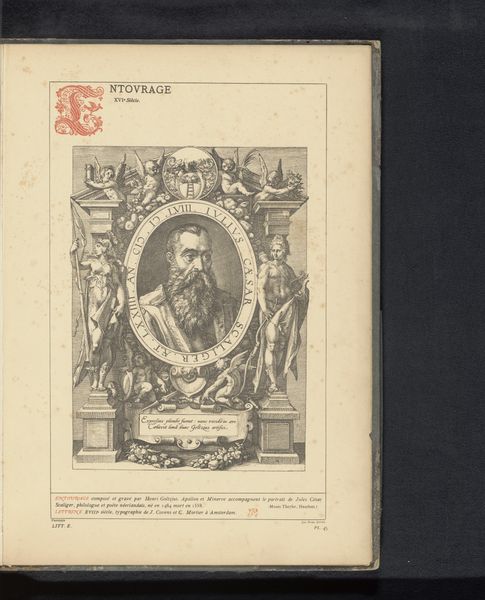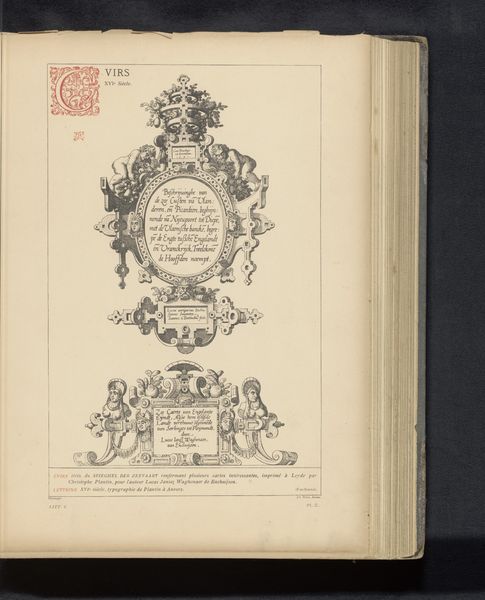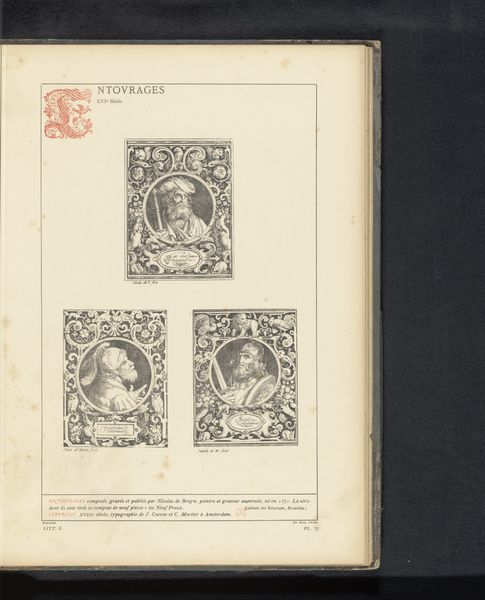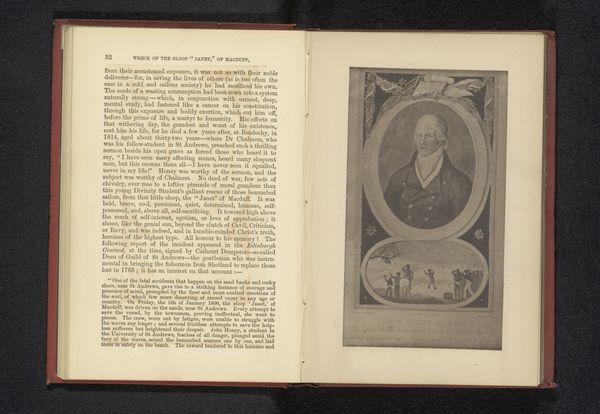
Reproductie van een prent van een portret van Charlotte van Bourbon omringd door grotesken, door Hendrick Goltzius before 1880
0:00
0:00
graphic-art, print, engraving
#
portrait
#
graphic-art
# print
#
11_renaissance
#
northern-renaissance
#
engraving
Dimensions: height 268 mm, width 182 mm
Copyright: Rijks Museum: Open Domain
Curator: This engraving presents a portrait of Charlotte van Bourbon, encircled by grotesque ornamentation, a work by Hendrick Goltzius dating back to before 1880. It appears to be a reproductive print, and it certainly feels… enclosed. Editor: Enclosed is right. It feels like she's both adorned and imprisoned by this ornate cage. The frame overwhelms the subject in a rather striking manner. It emphasizes this push and pull, no? A real density of detail. I am very drawn to the visual labor involved in this reproductive method, considering its temporal setting and function of circulating imagery and solidifying identities. What was the impact of the piece originally, considering the processes employed in production and consumption? Curator: Goltzius was a master of the Northern Renaissance style, here channeling printmaking. This meticulous craft reflects not just an aesthetic preference but the socio-economic structure underpinning artistic creation and its distribution. In these prints, symbols had very explicit meaning: it would have mattered how carefully crafted each element of the engraving was. Notice how each corner of the rectangular border around the central portrait holds a small emblematic scene; they appear to interact symbolically with Charlotte. The texts included give context to a reading and were likely also integral to the image. Editor: Those grotesque details framing Charlotte! To my eyes, it feels like they reveal more than they conceal, hinting at inner psychological complexities behind the surface portrayal of nobility. The scroll at the base has Latin verses too, no? Do they offer insight into her persona? The very date included, in roman numerals no less, has weight. Curator: Indeed. The inscription seems to praise her, talking about how even in darkness she finds light. Such verses contribute to an aura and help disseminate not only a likeness, but a desired character, within courtly circles of consumption and artistic networks. It is fascinating how printed material could both democratize an image and propagate certain ideas of female virtue and nobility. I wonder, what does this mode of reproduction contribute to her image? Editor: The method grants her a kind of immortality through dissemination. She’s caught in an iconographic web. Looking at it closely now, it is about much more than an attempt to create likeness, don’t you think? The print actively forges a potent symbolic narrative. Curator: Precisely, the narrative is crucial, shaping public perceptions as well as historical memory. That tension between creation and distribution reveals so much of how power, even feminine power, was manufactured and maintained. Editor: Fascinating. These intertwined layers offer enduring depth, much like the web spun by Goltzius' engraving itself.
Comments
No comments
Be the first to comment and join the conversation on the ultimate creative platform.
